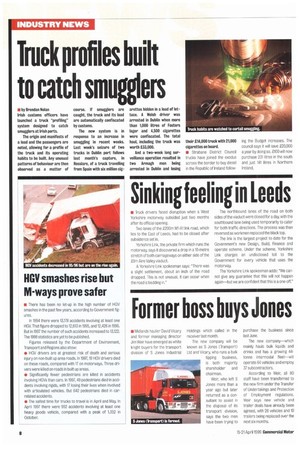HGV smashes rise but M-ways prove safer
Page 10

If you've noticed an error in this article please click here to report it so we can fix it.
• There has been no let-up in the nigh number of HGV smashes in the past few years, according to Government figures.
In 1994 there were 13,178 accidents involving at least one HGV. That figure dropped to 12,613 in 1995, and 12,426 in 1996. But in 1997 the number of such accidents increased to 13,122. The 1998 statistics are yet to be published.
Figures released by the Department of Environment, Transport and Regions also show: • HGV drivers are at greatest risk of death and serious injury on non-built up area roads. In 1997,19 HGV drivers died on these roads, compared with 17 on motorways. Three drivers were killed on roads in built up areas.
• Significantly fewer pedestrians are killed in accidents involving HGVs than cars. In 1997,49 pedestrians died in accidents involving rigids, with 17 losing their lives when involved with articulated vehicles. But 642 pedestrians died in carrelated accidents.
• The safest time for trucks to travel is in April and May. In April 1997 there were 952 accidents invoMng at least one heavy goods vehicle, compared with a peak of 1,352 in October.












































































































